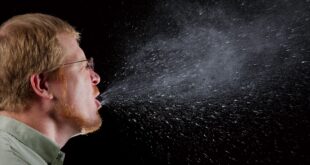Spain’s tanks are heading right into 2025 in much better problem than they started 2024, which is tolerable information taking into consideration that the circumstance of lasting dry spell (when much less rains than regular tips over 3 successive years) still continues Catalonia, components of the Cantabrian coastline (Asturias, Cantabria and Álava), the southeast of the nation and both island teams.
The country’s overall water gets begin the year with 28,973 million cubic metres (137 hm3 greater than recently of 2024, up by 0.2%), equal to 51.7% of its ability, according to information released on Thursday by the Ministry for Ecological Change and the Group Obstacle (Miteco). Of this total amount, the tanks on the Atlantic side gathered 20,850 million cubic metres (72% of the total amount) and those on the Mediterranean side, over 8,123 million m3 (28%).
Contrasted to their circumstance a year ago when they went to 46% of their ability, the tanks are 5.6 factors greater and currently hold 3,142 million cubic metres greater than at the start of January 2024, a quantity a little greater than nationwide, yearly, residential intake.
Litres per square metre in 2024
670mm
A little wetter than a regular year.
In regards to rains in 2024, 670 litres per square metre have actually been gathered on landmass Spain in its entirety, according to provisionary information supplied by Aemet (Spain’s nationwide atmospheric company), with recently’s rains still to be videotaped. This is 5% over regular. It was the initial damp year because 2018. Throughout 2024 there have actually been 4 months classified as ‘really completely dry’: April, July, November and December; one ‘completely dry’ month: Might; 4 ‘damp’ months: January, February, August and September; 2 ‘really damp ¡ months: March and June. After that there was the month of October with 2 ‘Dana’ climate occasions, which was ‘very damp’ – actually, the wettest month because documents started. The standard was 147 litres, 189% of the typical worth for this month.
The present degree of Spain’s tanks is likewise greater (6 tenths over) than the standard for the last 10 years, an additional motivating number taking into consideration that a year ago they went to 46%, practically 8 factors listed below the standard for the years.
Contrasted to their January 2024 documents, the drain containers that generally experience a lot more water issues (those in the south and Catalonia) likewise existing much better degrees. This holds true with the Guadalquivir and Guadiana river containers (15 factors greater specifically), the Andalusian Mediterranean container (10 factors greater), Guadalete Barbate (14 factors greater), Júcar and Segura (3 factors greater each) and the inland Catalan container (17 factors greater).
The water gets at these places boosted many thanks to the hefty rainfalls in March (it drizzled two times as long as regular) and Might, and once again the rains videotaped throughout the fall, specifically in October, the month of the Dana tornados. This change in water degrees truly sticks out when taking a look at the Sau storage tank in Barcelona since in March 2024 it went to 1% of its ability and afterwards, just 3 months later on in June, it got to over 40%. Today it goes to 16%, a percent that is still really reduced, however absolutely nothing like it went to that actual nadir throughout the dry spell.
A comparable circumstance is happening for the tanks along the Segura river container, which are rather much better than a year ago although still in an important circumstance at 21% of their ability. This is the most awful on document of all the landmass’s drain containers. Actually, the ‘Comisión de Desembalse’ (the state authority that allows water reñease from tanks for various other usages) has actually chosen to keep watering limitations in this field at the very least till March 2025 after keeping in mind that the recuperation of gets (25 million m3 a lot more in a year) is still inadequate.
The south-eastern tanks.
For the remainder, the circumstance of the nationwide water gets is as complies with: over 50% of their ability are the Eastern Cantabrian gets at 86.3%; the Western Cantabrian at 65.5%; the Miño-Sil at 55.7%; Galicia Costa at 80.8%; the inland river containers of the Basque Nation at 95.2%; the Duero at 63.6%; the Tagus at 54%; the Tinto, Odiel and Piedras at 82.5% and the Ebro at 75.5%.
Listed Below 50% are the Guadiana at 41.2%; Guadalete-Barbate at 28.2%; Guadalquivir at 35.1%; the Andalusian Mediterranean Container at 29.2%; the Júcar at 49.8%; Catalonia’s inland river containers at 33.4% and the Segura at 21.3%.
The tanks in all the districts of Spain are over 20% with the exemption of Almeria, whose tanks hardly surpass 9% of their ability. The following cheapest districts are Albacete (20.3%), Alicante (21%) and Murcia (21.6%).
For Teacher Jorge Olcina, supervisor of the Meteorology Research Laboratory at the College of Alicante, the basic point of view of beginning 2025 with much better gets than in 2015 declares information, however he advises of the proceeding problem with the containers in the southeast of Spain, specifically those of the Segura and the Andalusian Mediterranean, the only 2 that are listed below 30% of their ability, along with the Guadalete-Barbate, which provides a much smaller sized populace. “These are stressing percents and we have to not reduce our guard in connection with the dry spell strategies. In this southeast quadrant the water gets are bad.” Prof Olcina likewise explained that, according to Aemet projections, it does not look like this winter months is mosting likely to be an extremely wet one.
 Costa News Spain Breaking News | English News in Spain.
Costa News Spain Breaking News | English News in Spain.






